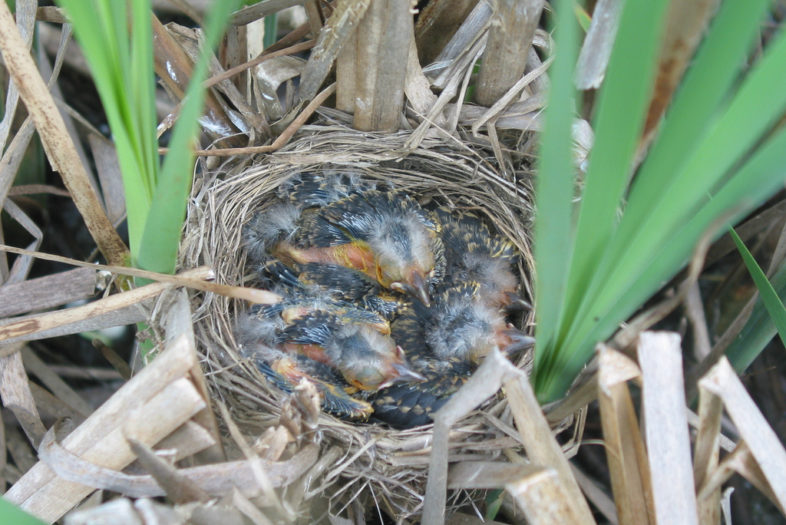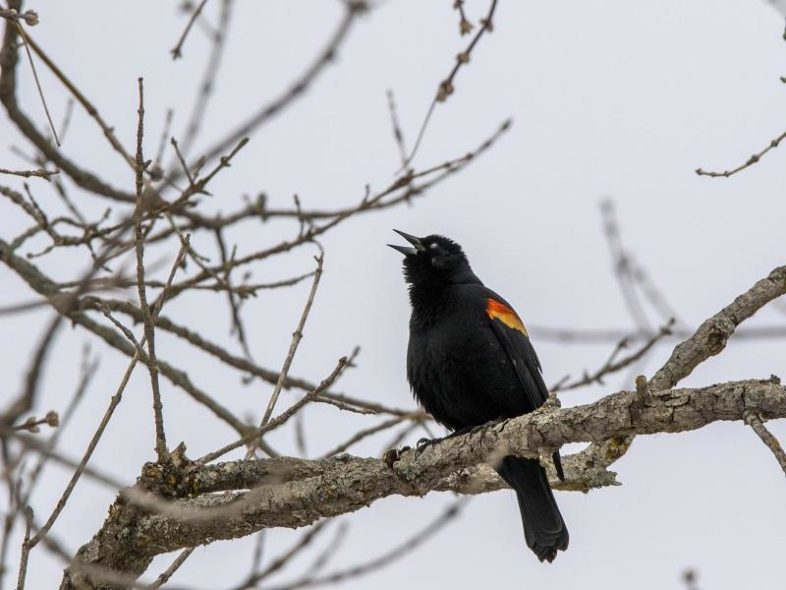There are many signs of spring that excite us here in northern New England. But perhaps the best sign from the bird world is the return of the Red-winged Blackbird. For several days each year the Red-winged Blackbird, a very common bird, becomes a rare crown jewel for bird watchers. The males always arrive ahead of females, vying with each other to defend the best territories so they can attract the best females. It’s a gamble. Early males risk encountering poor weather and scant food for the chance to beat other males to the best real estate.
In this episode of Outdoor Radio, we join Kent McFarland and Sara Zahendra on a spring day in Quechee at Dewey’s Mill Pond, a popular birding area, watching for and listening to Red-winged Blackbirds. They are still relatively abundant and easy to find, but since the 1970s Red-winged Blackbird populations have declined by about 30 percent. Also, these harbingers of spring have been arriving earlier and earlier as the climate has been changing.
Spring arrival dates over many years can be a great way for us to track and understand potential climatic effects on bird migration and populations. Phenology studies like these can alert us to slowly changing trends that we might not otherwise notice.
Getting her start in 1960, Kathleen Anderson recorded spring phenology on her 100-acre property just south of Boston for over 50 years. Everyday she recorded bird arrivals, plants flowering, butterflies emerging and frogs singing. She wasn’t systematic in her efforts, but year after year she paid attention on her walks or while sitting on the back porch and noted each observation in her diary.
Years later, scientists at Boston University were curious to know if a naturalist’s diary could be valuable for detecting potential changes in spring phenology. Since the first years of Anderson’s observations, the average spring temperature in that region rose 3.6° F. Did spring phenology change too? Anderson’s diaries showed that many bird species arrived significantly earlier, like Wood Duck, which appeared 32 days earlier and Ruby-Throated Hummingbirds that came 18 days earlier. Overall, 22 of the 24 species they examined showed trends toward earlier spring activity, including Red-winged Blackbirds, which arrived about 2.5 days earlier.
Red-winged Blackbirds are nesting earlier too. An examination of nearly 5,000 nest records reported from bird watchers from across North America collected from 1956 to 2000 showed that females laid eggs 7.5 days earlier over the 50-year period.

Red-winged Blackbird nest with chicks at North Branch Nature Center. / © Larry Clarfeld
Join Outdoor Radio on a cold spring day as they listen to songs and calls of male Red-winged Blackbirds setting up and guarding their breeding territories. Learn about their interesting mating system and other natural history and then get out and watch them near you.
Listen to the Show
Learn More
- See images and observations of Red-winged Blackbirds on the Vermont Atlas of Life on iNaturalist and add your discoveries too by joining iNaturalist.
- Learn more about Red-winged Blackbirds from Cornell Lab of Ornithology’s All About Birds and the Vermont Atlas of Life Breeding Bird Atlas.
- Check out images, sounds and a map of Red-winged Blackbird sightings on Vermont eBird.
Outdoor Radio is produced in collaboration with Vermont Public Radio.

